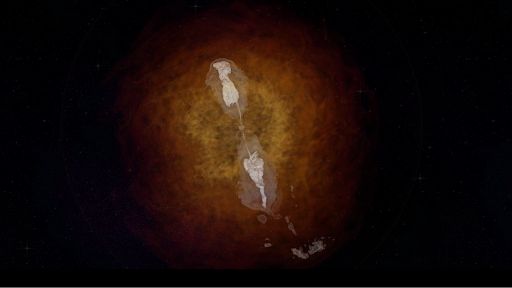
The elusive origins of long gamma-ray bursts may finally be revealed (Image Credit: Space.com)
Some of the universe’s most energetic and mysterious light shows, long gamma-ray bursts, could be generated after dense dead stars collide to create infant black holes surrounded by a natal disk of gas and dust.
This is the conclusion of a team of researchers who used computer simulations to show that when neutron stars — dense, extremely dead stars created when massive stars run out of nuclear fuel — collide and merge, a long gamma-ray burst can be launched alongside the event’s jets and winds of energetic particles.
These results could help astronomers explain the existence of strange long gamma-ray bursts that can’t be linked to the collapse of massive stars which, in addition to creating neutron stars, can also birth stellar-mass black holes.
“Our findings, which connect observations with underlying physics, have unified many unresolved mysteries in the field of gamma-ray bursts,” Ore Gottlieb, lead author of the research and a scientist at the Center for Computational Astrophysics (CCA), said in a statement. “For the first time, we can look at gamma-ray burst observations and know what happened before the black hole formed.”
Related: This gamma-ray space mystery may finally be solved with new black hole simulations
Solving a long gamma-ray burst puzzle
Gamma-ray bursts were initially spotted in the late 1960s, and since then, they have presented scientists with an enduring puzzle as the exact mechanism that creates these bursts of high-energy light remains mysterious.
The picture is further complicated by the fact that there are two distinct populations of gamma-ray bursts: short-duration bursts lasting no more than a second and long-duration bursts, which can last longer than 10 seconds.
Physicists initially linked short gamma-ray bursts to jets blasted out during neutron star mergers, which also generate flashes of light called kilonovas and create so-called “hyper-massive neutron stars” that themselves quickly collapse to birth black holes. On the other hand, long gamma-ray bursts were attributed to jets of matter launched in the collapse of massive rotating stars to birth either black holes or neutron stars.
Yet, in 2022, astronomers discovered two long gamma-ray bursts that didn’t quite fir in with patterns of other radiation blasts of this type. These bursts thus couldn’t be created in the collapse of a massive star, the scientists reasoned. This is what first led experts to speculate that cosmic collisions could also create long gamma-ray bursts under certain circumstances.
Gottlieb and colleagues have spent months running sophisticated simulations with the Flatiron Institute’s supercomputers to see if such a hypothesis held true, and mergers could indeed spark long gamma-ray bursts.
The simulations start with two compact objects closely orbiting one another, then spiraling together, colliding and merging. Upon merging, the event launches jets of matter out at near-light speeds. The team then observed these jets in the simulation as they traveled far away from the merger site’s epicenter.
Combining this model with data gathered in astronomical observations, Gottlieb and colleagues devised a unified model for gamma-ray bursts, showing that the strange long gamma-ray burst examples could be created in the aftermath of neutron star mergers. This would happen, they say, because the resultant body of a merger is surrounded by a rotating disk of leftover material that is magnetically charged. This ring of material could technically send out long gamma-ray bursts.
Interestingly, the model could also help scientists determine what the system sending out those gamma-ray bursts looked like before the merger.
“If we see a long gamma-ray burst like the ones observed in 2022, we now know that it’s coming from a black hole with a massive disk,” Gottlieb added. “And knowing there is a massive disk, we now can figure out the ratio of the masses of the two parental objects because their mass ratio is related to the properties of the disk. For example, the merger of unequal-mass neutron stars will inevitably produce a long-duration gamma-ray burst.”
The model devised by the team isn’t just applicable to long gamma-ray bursts either. It could be used to better understand the process behind the launch of short gamma-ray bursts. Gottlieband and the team’s model may be hinting that these shorter-duration blasts of high-energy radiation could originate from smaller disks of matter around black holes.
Or, alternatively, short gamma-ray bursts could emerge from unstable hypermassive neutron stars before they rapidly collapse to birth black holes, the team says.Using the model in this way will require it to undergo refinement and needs more gamma-ray burst observational data, which could be forthcoming when the Vera C. Rubin Observatory starts observing in early 2025.
“As we get more observations of gamma-ray bursts at different pulse durations, we’ll be better able to probe the central engines powering these extreme events,” Gottlieb concluded.
The research was published on Nov. 29 in the Astrophysical Journal Letters.





